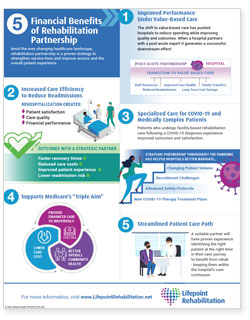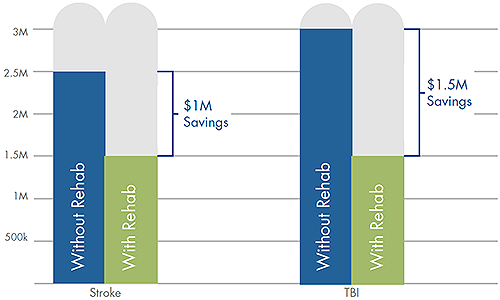Narconon Africa Fundamentals Explained
Narconon Africa Fundamentals Explained
Blog Article
Get This Report on Narconon Africa
Table of ContentsNarconon Africa Things To Know Before You BuyHow Narconon Africa can Save You Time, Stress, and Money.About Narconon AfricaNarconon Africa Fundamentals ExplainedA Biased View of Narconon Africa9 Simple Techniques For Narconon AfricaLittle Known Questions About Narconon Africa.
In a collection of papers with Manudeep Bhuller and Katrine V. Lken, we get rid of these information difficulties and the nonrandomness of imprisonment, offering brand-new understandings into how imprisonment influences recidivism, work, children, and criminal networks - Effective long-term drug rehab results. Number 1 Our work research studies the impacts of imprisonment in Norway, a setting with two essential benefitsWe can better connect this info to other relative, consisting of youngsters and siblings. We have details on co-offending that permits us to map out criminal networks for observed crimes. Second, we can leverage the arbitrary job of criminal situations to judges that vary in their tendencies to send out offenders to jail.
But some courts send defendants to prison at a high rate, while others are more lax. We determine a judge's stringency as the typical imprisonment rate for all other cases a judge handles, after regulating for court and year fixed effects, which is the level of arbitrary assignment. This quasi-random project of judge stringency can be used as an instrument for incarceration, as it strongly forecasts the judge's choice in the current instance, yet is uncorrelated with other case features both by layout and empirically.
Some Known Facts About Narconon Africa.
Features of prisoners, including demographics and criminal offense groups, are broadly similar in Norway and other countries, including the United States, with the exemptions that the US homicide rate is much greater, and race plays a larger function there. What attracts attention as different, specifically compared to the United States, is the prison system.
Figure 2In Norway, the average time spent behind bars is a little over 6 months, which resembles most various other Western European nations. This contrasts with ordinary United States prison time of nearly 3 years, which remains in large component the factor the United States is an outlier in its imprisonment rate compared to the remainder of the world [Figure 1]
About Narconon Africa
This provides much more splitting up between minor and solidified offenders than exists in the USA. There is no congestion in Norwegian jails and better personal security, with each detainee being appointed to their own cell and a greater inmate-to-staff proportion than in the United States (https://www.openlearning.com/u/elmahernandez-sek9ed/). Jails in Norway also offer well-funded education and learning, medication therapy, psychological health, and work training programs
Our research study on the impacts of imprisonment on the offender, utilizing the arbitrary task of courts as an instrument, yields three crucial findings. First, imprisonment prevents further criminal behavior. We discover that incarceration decreases the likelihood that an individual will certainly reoffend within 5 years by 27 percentage their website points and decreases the corresponding variety of criminal charges per person by 10 costs.
The Best Guide To Narconon Africa
We locate substantial decreases in reoffending possibilities and cumulative charged criminal offenses even after defendants are launched from jail. Our second result is that prejudice because of selection on unobservable individual attributes, if ignored, leads to the incorrect verdict that time spent in prison is criminogenic. If we merely compare criminal defendants imprisoned versus those not sent out to jail, we locate positive organizations between incarceration and subsequent crime.
This stands in contrast to our evaluation based on the arbitrary task of judges, which locates an opposite-signed result. Third, the decrease in crime is driven by people who were not working prior to imprisonment. Among these individuals, imprisonment boosts participation in programs guided at enhancing employability and reducing recidivism, and this inevitably increases employment and earnings while dissuading criminal habits.

Jail time creates a 34 percentage factor boost in participation in job training programs for the previously nonemployed, and within five years their employment price increases by 40 percent factors. At the very same time, the possibility of reoffending within 5 years is cut by 46 percentage factors, and there is a decrease of 22 in the average number of criminal fees.
The 9-Second Trick For Narconon Africa

A plausible explanation for the distinction is that Norway's prison system differs noticeably, both in regards to prison-term length and jail problems, from the United States prison system. While comprehending the results of incarceration on the wrongdoer is an important very first step, capturing spillover impacts is likewise essential for assessing criminal justice plan and designing reliable jail systems.
What Does Narconon Africa Do?

Common the very least squares approximates disclose that children of incarcerated papas are 1 percent factor more most likely to be billed with a criminal activity, about a mean of 13 percent, and reveal no result on college grades. Using our judge stringency instrument, we discover no analytical proof that a daddy's imprisonment influences a youngster's own criminal offense or institution qualities, yet we are not able to rule out modest-sized impacts.
The Only Guide to Narconon Africa
We specify criminal groups based on network links to previous criminal situations. Our evaluation yields three main searchings for. When a criminal network member is jailed, their peers' possibility of being billed with a future criminal activity reduces by 51 percentage points over the following 4 years. Likewise, having an older brother incarcerated decreases the likelihood his younger brother will be billed with a crime by 32 percentage points over the following 4 years.
Report this page